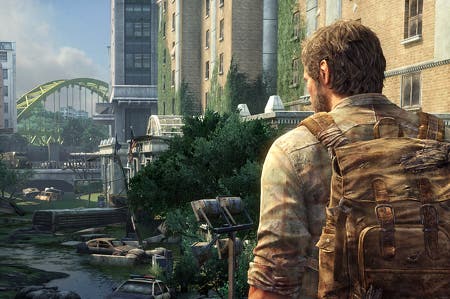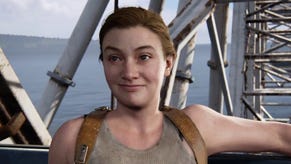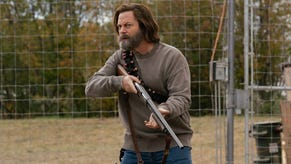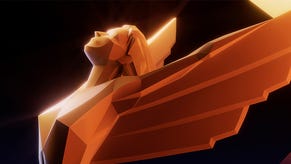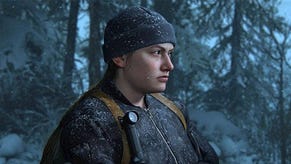Digital Foundry vs. The Last of Us
Does Naughty Dog's final PS3 game define the template for next-gen AI and storytelling?
As the major console platform holders prepare to replace their current-gen hardware with the new cutting edge, PlayStation 3 in particular looks set to bow out at the height of its powers, with some phenomenal offerings incoming from Sony's first-party developers. Naughty Dog's The Last of Us is one of the most promising, representing the culmination of the developer's astonishing growth over the last six years - offering us the firm's trademark technical genius combined with a gameplay formula that hints at a new level of openness and opportunity we should expect from next-gen AAA titles.
First impressions of The Last of Us are overwhelmingly positive, even if the E3 presentation perhaps overly emphasised similarities with Naughty Dog's existing PS3 offerings. Viewed in isolation, gameplay clips could indeed suggest that this is Uncharted 3.5: the gunplay, cover mechanics and "helper" AI all echo back to the exploits of Nathan Drake and his band of companions. However, the Hollywood set-piece action and sheer spectacle of the Uncharted titles have been swapped out for a grittier, more claustrophobic gameplay experience based around the concept of survival at all costs.
There's a range of new technologies added to the Naughty Dog engine in The Last of Us, but, surprisingly, relatively few of them are related to the rendering fundamentals. Resolution remains unchanged at standard 720p, while a very similar post-process anti-aliasing solution to Uncharted 3's also appears to be in evidence - it seems to have some issues with high-contrast and/or long edges, but generally it works well in what we've seen of The Last of Us so far.
The advantage with this "lighter touch" approach to the post-process is that pixel-crawl is all but eliminated, and there is doubtless a large resource saving in comparison with Sony's established MLAA technology. In truth, the Uncharted tech remains state-of-the-art to the point where further enhancements in terms of model detail or texture quality are not really required to achieve the firm's artistic vision.
"From a rendering perspective, The Last of Us shares plenty of DNA with Uncharted 3, but enhancements to lighting and real-time shadowing are a class apart."
From what we've seen so far in terms of the rendering, it's the implementation of light and shadow that has seen the lion's share of the improvements. Naughty Dog points out that in its post-pandemic landscape, essential utilities like electricity are a thing of the past: nature is gradually reclaiming the world, necessitating a more organic look to the environments. The developer has already done some great work in this area, specifically with the global illumination technology that we first saw in Uncharted 2. In The Last of Us, indirect lighting - the way that light bounces from surface to surface - has received new emphasis.
Most of this will be pre-calculated offline and baked into the environments (real-time global illumination to any great degree will require next-gen graphics tech - it's the centrepiece of Unreal Engine 4) but where The Last of Us has attracted interest from Naughty Dog's rivals is in the quality of its real-time shadows. Objects and characters are beautifully lit and shaded, perfectly sitting within the environments. The jagged low-resolution dynamic shadows from Uncharted have been replaced with a far smoother effect that seems to be using multiple penumbra. Ambient occlusion, serving to add depth to the environments in the nooks and crannies, is a touch heavy in places (especially when characters move close to surfaces) but it generally looks a class apart - reminding us a little of the excellent work done by Sucker Punch for inFamous 2.
In common with the Uncharted titles, The Last of Us also features impressive object and camera-based motion blur - the effect being far more pronounced this time around. The velocity masks seem to be rendered at a lower resolution with bilinear upscaling, but the overall effect works beautifully in making the 30 frames per second presentation move more smoothly, and artifacts only really stand out to any noticeable degree when the game is frozen. Depth-of-field follows a similar aesthetic, but its use is very subtle during gameplay, not overly blurring the scene as we see in some games.
"The contextual animation system in Uncharted 3 seems to have been taken to the next level in the game - the level of interaction between characters and environments is superb."

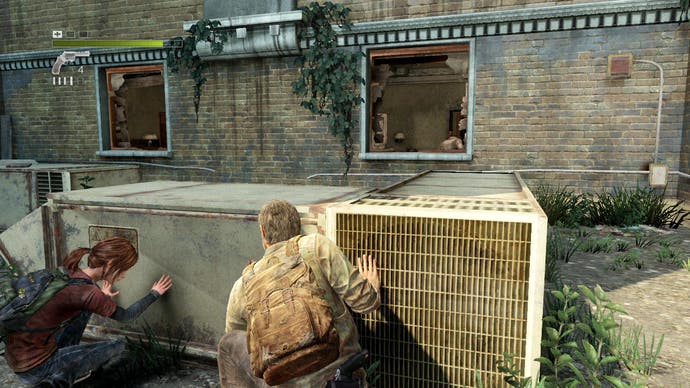
Performance analysis of available gameplay video? Based on what we've seen of the existing gameplay footage, there's little point. It's an entirely consistent, locked 30 frames per second, with absolutely no hiccups in frame-rate whatsoever. Testament to Naughty Dog's mastery of the PlayStation 3? Perhaps. Alternatively, the firm may well have rendered the gameplay footage offline, as it did when an Uncharted 3 gameplay video running at 60 frames per second escaped into the wild. We always wondered how Naughty Dog achieved that, and the answer may well reside within a tweet from co-president Christophe Balestra, revealing the lashed-up "render farm" of eight networked PlayStation 3 debugging stations, used principally for generating cut-scene footage. There's no reason why the same set-up couldn't generate the 60Hz Uncharted 3 feed or this new gameplay footage from The Last of Us. In the case of the latter, the game will still be in development and this procedure would show the game at its very best.
What interests us most about The Last of Us are the technical elements that aren't immediately apparent from the limited amount of canned footage we have, specifically in how Naughty Dog has set out to achieve its "wide linear" gameplay - the notion of tackling the game via multiple routes and adopting different game styles to suit. At its most basic level, a lot of this comes down to level design. In the walkthrough video, we see protagonist Joel taking one route through the building, but it's clear to see that there are multiple entry points, suggesting different strategies for handling the Hunters. However, what is the most intriguing element about the game is the dynamic AI, where characters move, talk and act in a highly contextual manner.
The inclusion of Ellie is the game's wildcard. In Uncharted, Sully, Elena and the rest of the gang could take care of themselves - essentially serving as bullet-spitting narrative foils for Nathan Drake. In The Last of Us, Naughty Dog takes this to the next logical level: Ellie needs to be nurtured and protected. While she helps out Joel to the best of her ability, she's far from an indestructible bullet sponge. She's clearly eager to help out - lobbing a brick at an enemy when Joel runs out of bullets in the walkthrough video - but what if you don't explore the environment enough for Ellie to find the brick in the first place? What if Joel doesn't run out of bullets? Naughty Dog is dynamically crafting events with customised dialogue and action, based directly on the consequences of the player's actions and his interactions with Ellie.
"Naughty Dog explored CPU-driven 'helper' AI in the Uncharted games, but in Ellie it has created its most interactive, fully realised character to date."
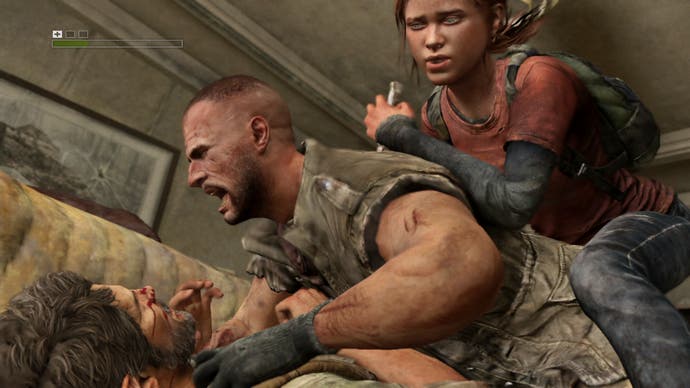

Dialogue is also fundamentally affected too. Uncharted 3 contained plenty of "easter egg" exchanges between Drake and his pals, according to where you were in the environment and what you were doing. Often there was the sense that additional, helpful dialogue was added by the developers to help stuck players - perhaps the result of Naughty Dog's extensive playtest sessions. The Last of Us expands on this: the more you explore, the more points of interest are found, and the more we see the back-story uncovered as the two characters talk amongst themselves.
It's a system that rewards the player with a deeper connection with the protagonists as they progress through the game. It's an ambitious system, and we'd imagine that the amount of speech recorded would need to be considerable, but Naughty Dog isn't afraid to make the most of a unique aspect of the PS3's architecture: the Blu-ray drive and its access to 50GB of data. Uncharted 3 actually exceeded the 50GB limit by quite some margin, compressing major gameplay files into bespoke .arc files (similar in principle to the standard .zip) in order to fit them onto the disc.
Uncharted 3 had one of the most impressive background streaming systems we've seen in a console title - a piece of tech that pushed the console so hard that the developer actually ran into problems with compatibility on earlier machines, only resolved in the final days before the game shipped. The Last of Us utilises this tech in a similar manner: eliminating level loading and streaming in assets - like voice work and animation - as they are needed.
The latter element in particular is outstanding: Joel and Ellie have a multitude of canned motion captures stored on the Blu-ray disc, with the game constantly evaluating surrounding geometry in order to produce the most appropriate context-driven animation. It's the best solution for the most realistic effect - procedurally generated motion is the natural evolution, as we've seen from first-gen efforts like FIFA's Impact Engine, but Naughty Dog's solution produces the more convincing effect. As a result, there's a genuine sense that these are living, breathing characters, interacting incidentally with their surroundings in a believable manner. The emphasis on realism extends to combat: whether you're taking damage or dishing it out, the location-based animation is brutally realistic to the point where the effect can be genuinely disconcerting.
"Avoiding confrontation keeps you alive, but resources are scarce in this post-pandemic world and taking them through violence is often the only option available."
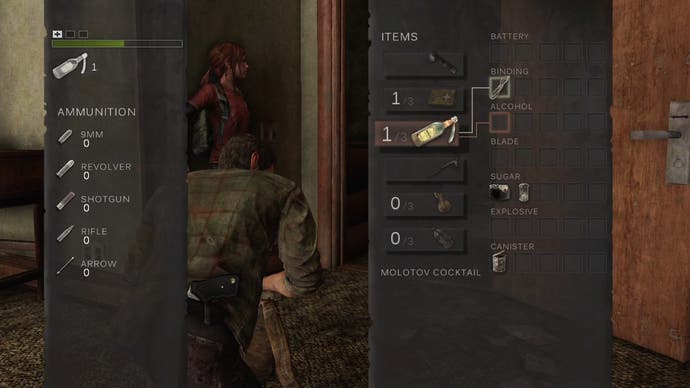
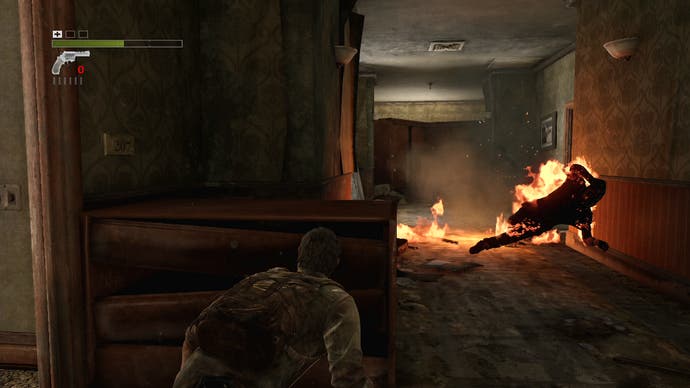
All of which leads us towards the element that interests us most: the moral choices facing the player and how this adjusts the gameplay. In the walkthrough we witness Joel using the new inventory system to fashion a Molotov cocktail, brutally burning one of the Hunters to death. The alcohol and bandages used to create the weapon can be used for medicinal purposes, so there's clearly a strong resource-management component to the game. But more interesting than that is Ellie's disgusted response - in her eyes, Joel has crossed a line. We're curious just how far Naughty Dog will go here: whether Ellie develops as a character based on the experiences she is exposed to by the player, or if she progresses on a simpler, more linear path, with a set series of contextual responses to specific scenarios. The choices the developer makes here could have a fundamental effect on how players choose to tackle the game.
Based on the pedigree of the developers, it's extremely unlikely that The Last of Us will disappoint in terms of the technological fundamentals - after all, Naughty Dog's production values are beyond reproach. There's clearly a phenomenal level of potential here, but the developer needs to comprehensively overcome one of the few weaknesses of Uncharted 3: its inconsistent, often infuriating AI. The Santa Monica-based studio is still playing its cards close to its chest here - we've only been afforded a brief glimpse into the world of The Last of Us - but all the signs look good, and the freeform, almost dynamic narrative perhaps offers us a first look at the kind of storytelling and gameplay we expect to feature prominently in top-tier next-gen titles.
